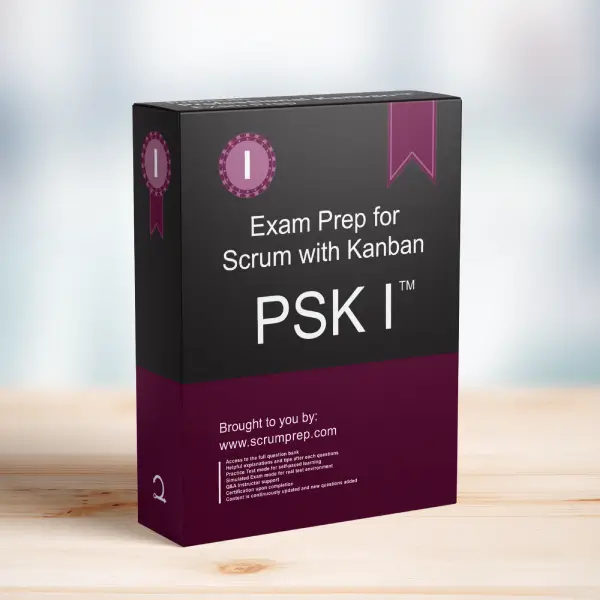Elements Constituting a Kanban Board
A Kanban board is an essential tool in Kanban and Scrum with Kanban practices, helping teams visualize their workflow and manage Work in Progress (WIP).
Exam Question
What are the two things that constitute a Kanban board?
(choose the best two answers)
A. Swim lanes per PBI type.
B. Visualization of your workflow.
C. Work in Progress (WIP) Limits.
D. Class of service.
Correct Answers
B. Visualization of your workflow.
C. Work in Progress (WIP) Limits.
Explanation
Correct Answers
B. Visualization of your workflow:
One of the primary purposes of a Kanban board is to visualize the workflow. This includes representing different stages of the process, from the start to the completion of work items. It helps team members and stakeholders see what work is in progress, what work is completed, and what work is queued up.
C. Work in Progress (WIP) Limits:
WIP limits are essential for managing the flow of work in a Kanban system. They help prevent overloading the team, ensuring that the team can maintain focus and complete work efficiently. By limiting the amount of work in progress at any given time, teams can reduce multitasking and increase throughput.
Why the Other Options Are Less Effective
A. Swim lanes per PBI type:
While swim lanes can be a useful feature of a Kanban board to differentiate between types of work or different teams, they are not a core component that constitutes a Kanban board. The fundamental aspects are visualization of workflow and WIP limits.
D. Class of service:
Class of service refers to policies that determine how different types of work are handled (e.g., urgent vs. standard). While it is a valuable concept in Kanban, it is not a fundamental element that constitutes a Kanban board.
Importance of Visualization and WIP Limits
- Visualization: Helps the team and stakeholders see the progress of work, identify bottlenecks, and understand the workflow.
- WIP Limits: Ensure that the team does not take on too much work at once, promoting focus and reducing delays caused by multitasking.
Effective Practices for Using a Kanban Board
- Clear Workflow Stages: Define clear stages in the workflow to visualize the progress of work items.
- Set and Enforce WIP Limits: Determine appropriate WIP limits for each stage and ensure the team adheres to them.
- Regular Review: Continuously review the board to identify bottlenecks and areas for improvement.
Relevance to the PSK I Exam
Understanding the core elements of a Kanban board, including the visualization of workflow and WIP limits, is crucial for the PSK I exam. It demonstrates knowledge of essential Kanban practices that support effective workflow management.
Key Takeaways
- The primary components of a Kanban board are the visualization of the workflow and WIP limits.
- These elements help manage the flow of work, prevent overloading, and enhance team focus and efficiency.
- Additional features like swim lanes and class of service are useful but not fundamental to the constitution of a Kanban board.
Conclusion
The core components of a Kanban board are the visualization of the workflow and Work in Progress (WIP) limits. These elements are essential for managing workflow effectively and ensuring team efficiency. For more information on preparing for the PSK I exam, visit our Professional Kanban PSK I™ Exam Prep.



